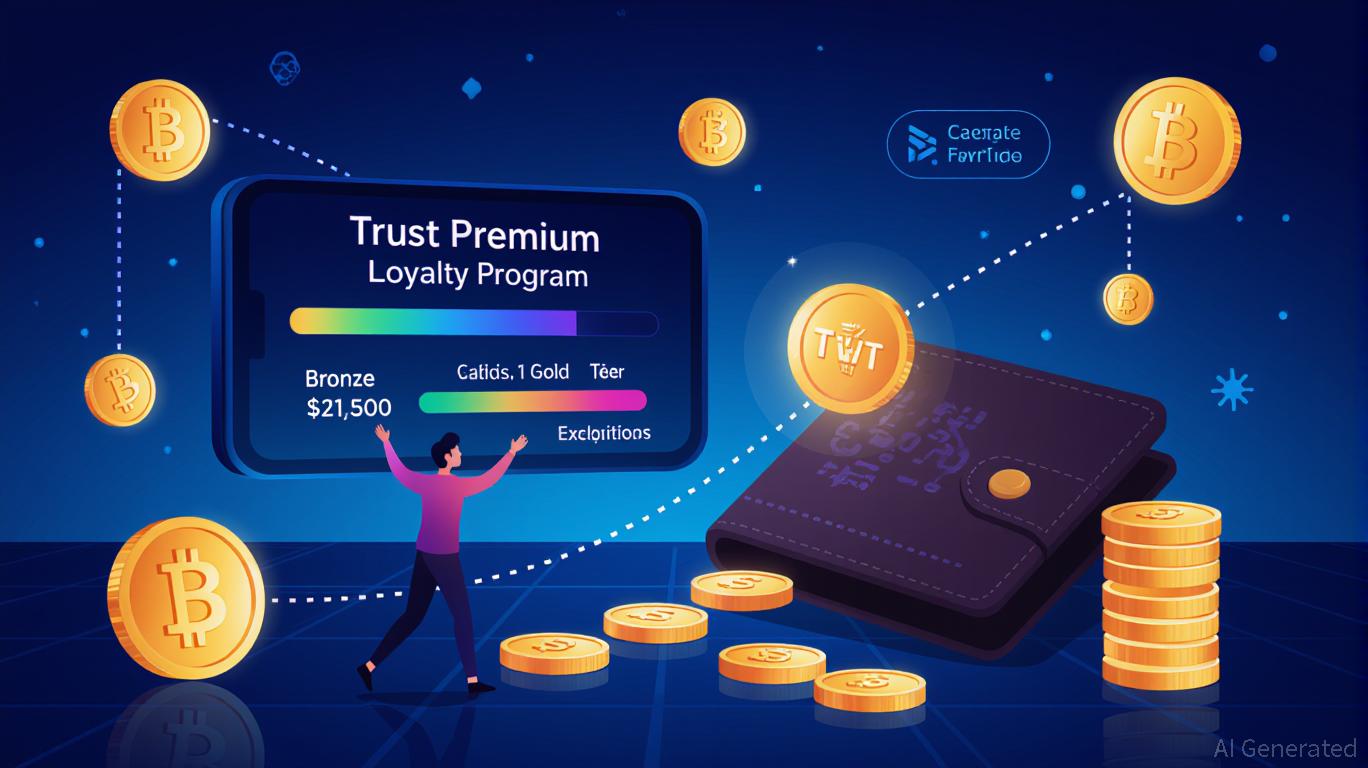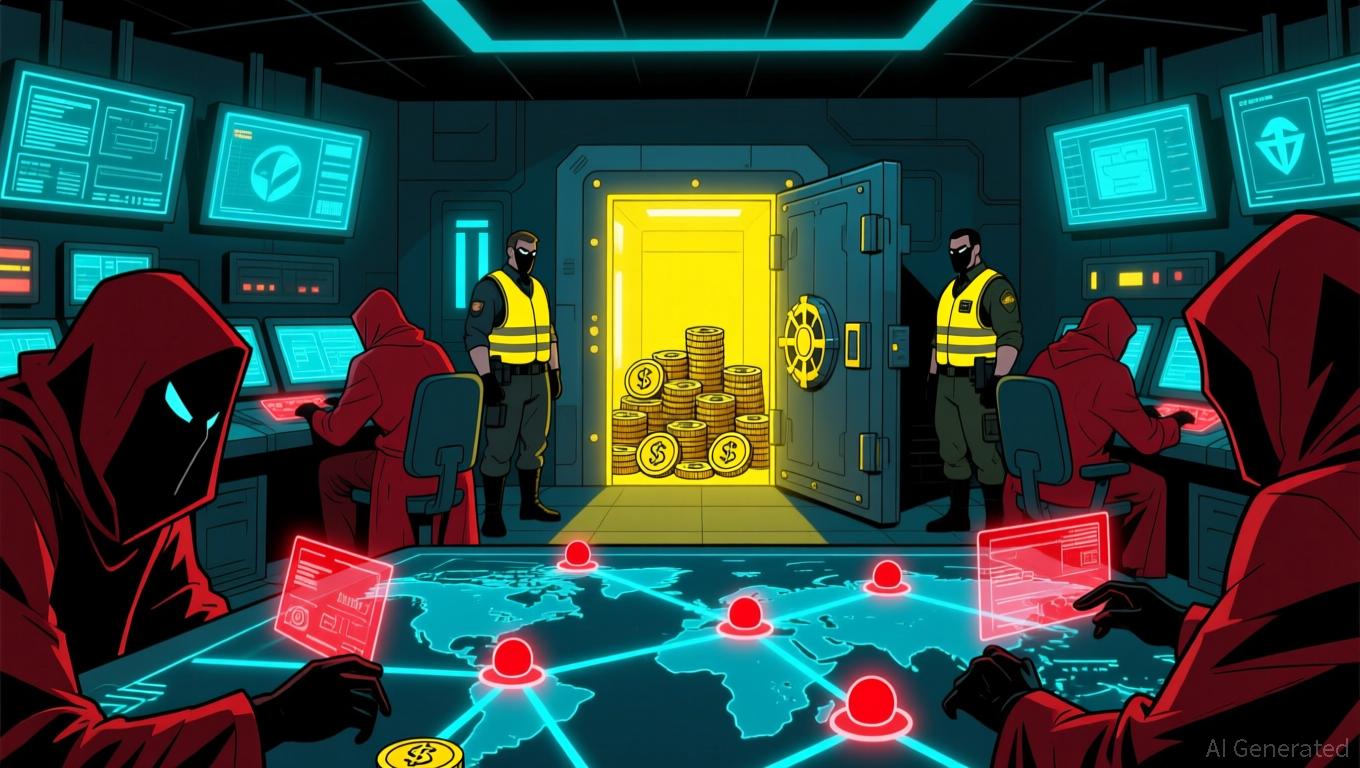TWT's Updated Tokenomics Structure and Its Impact on the Market
- TWT shifted to a gamified utility model in 2025 via Trust Premium, replacing governance-focused tokenomics. - Fixed supply and 2020 token burn (88.9B TWT) create scarcity but lack phased liquidity mechanisms seen in projects like Ontology. - Trust Premium tiers reward user activity with gas discounts and airdrops, linking TWT value to ecosystem engagement rather than speculation. - Over 40% supply already circulating since 2020 contrasts with aggressive liquidity incentives in competitors like Astar Netw
Fixed Supply and Burn Events: Building Scarcity
TWT’s total supply is strictly limited, with smart contract rules preventing any inflation, as highlighted in the
Trust Premium: Gamification Fuels Utility
Launched in the last quarter of 2025, the Trust Premium program brings a multi-level rewards system (Bronze → Silver → Gold) that rewards users for activities like swapping, staking, and holding TWT, as explained in the

Allocation Strategies and Market Motivation
TWT’s distribution plan focuses on long-term viability, with over 40% of the total supply already in circulation since 2020, as referenced in the
Investor Outlook and Volatility Concerns
The combination of TWT’s capped supply and gamified utility presents both opportunities and risks for investors. Scarcity and increased utility could help stabilize the token’s price over time. However, the absence of inflationary rewards and dependence on user participation could lead to price swings. For instance, if Trust Premium does not attract enough users, TWT’s value might stagnate or drop despite its limited supply. On the flip side, strong adoption could trigger sharp price increases, similar to what happened with Ontology’s ONG after its supply adjustment, as mentioned in the
Conclusion: Weighing Utility Against Liquidity
The 2025 tokenomics update for TWT marks a significant move toward prioritizing utility and user-driven value. While the fixed supply and Trust Premium initiative create a strong case for scarcity and engagement, the lack of liquidity incentives and gradual supply releases may present hurdles. Investors should consider the prospects for growth based on utility against the volatility risks tied to user participation. As the digital asset market continues to change, TWT’s future success will likely rely on its ability to maintain a careful balance between these factors, supported by a clear and sustainable allocation plan.
Disclaimer: The content of this article solely reflects the author's opinion and does not represent the platform in any capacity. This article is not intended to serve as a reference for making investment decisions.
You may also like
Bitcoin News Today: Bitcoin Plummets: Is This the Start of a Bear Market or Preparation for a 2026 Recovery?
- Bitcoin nears six-month lows as fear index hits seven-month low of 15. - Massive ETF outflows and fading Fed rate-cut hopes signal waning institutional confidence. - Chain data shows long-term holder sales and bearish sentiment below key support levels. - Analysts debate bear market risks vs. potential 2026 rebound amid bullish chart patterns.

Bitcoin Updates: CME's Cryptocurrency Expansion Gains Traction While Regulators Prepare for Major Reforms
- Bitcoin options traders show resilience amid volatility, with calls outpacing puts as derivatives data hints at a potential price floor. - CME Group expands crypto influence through new partnerships and regulatory reforms, including potential U.S. spot trading approval by late 2025. - Bipartisan Senate bill proposes CFTC oversight of digital commodities, aiming to unify regulation but leaving gaps in stablecoin and DeFi sectors. - Market focus shifts to macroeconomic indicators, with November CPI and FOM

DOJ Cracks Down on North Korea's Cryptocurrency Network by Seizing $15M in Tether
- U.S. DOJ seized $15M in Tether linked to North Korean hackers, targeting sanctions-busting crypto operations via stolen identities and remote work schemes. - APT38 group and "domestic helpers" facilitated DPRK fund siphoning, masking IP addresses and routing payments to evade sanctions. - The crackdown highlights rising stablecoin risks, regulatory scrutiny, and cross-border efforts like the U.S.-Thailand $12M USDT seizure. - Investors face increased volatility and compliance costs, while Trump's crypto

$BCH Trades At $497.02 — New Earth Version 2 ($EV2) Presale Draws Investor Interest
